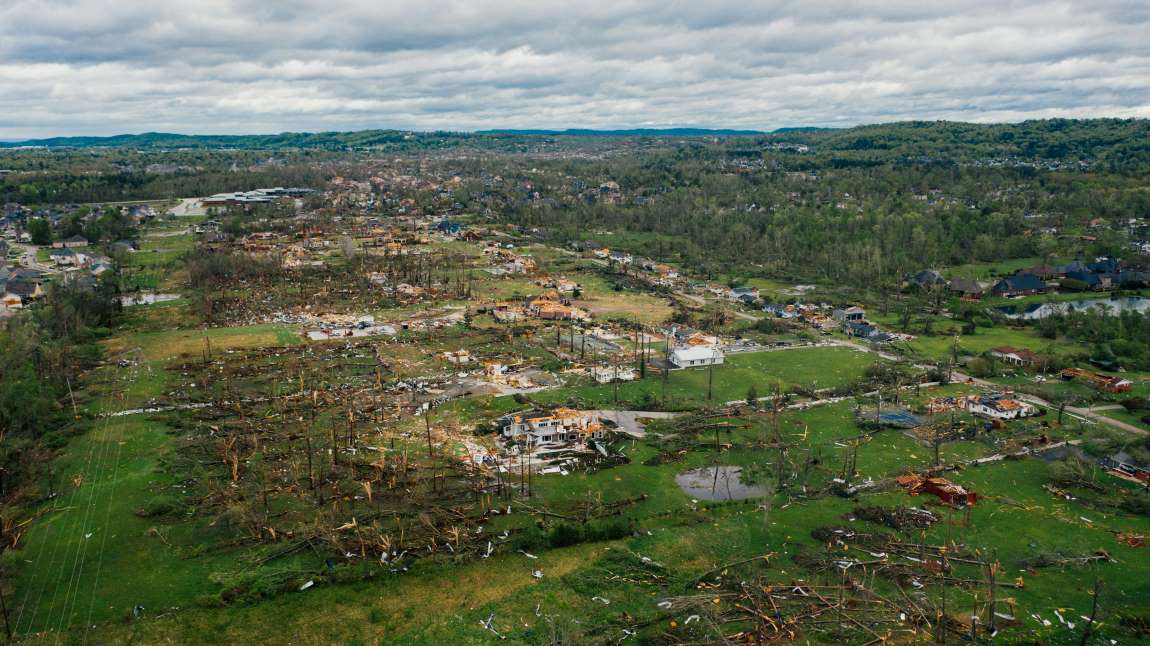A new study has revealed that hurricanes and tropical storms in the United States are responsible for far more deaths than previously thought, with the mortality effects lingering for nearly 15 years after the storm’s immediate impact.
Published in Nature journal, this research challenges the traditional focus on direct deaths and unveils a more substantial, long-term death toll tied to these events.
Traditionally, U.S. government statistics report about 24 direct deaths per storm, mainly due to drowning or traumatic injuries. However, the new findings from researchers Solomon Hsiang, professor of environmental social sciences at the Stanford Doerr School of Sustainability, and Rachel Young, postdoctoral scholar at the University of California, Berkeley, suggest that the real toll is much higher.
They estimate that each tropical cyclone indirectly leads to 7,000 to 11,000 additional deaths, making hurricanes a hidden driver of long-term mortality risk across the U.S.
Long-Term death toll surpasses estimates
The study’s estimates, based on 501 tropical cyclones that struck the Atlantic and Gulf coasts between 1930 and 2015, point to a death toll far exceeding prior estimates. According to Hsiang and Young’s calculations, tropical cyclones since 1930 have caused between 3.6 million and 5.2 million deaths in the U.S. – more than the total number of fatalities from motor vehicle accidents, infectious diseases, or combat-related deaths over the same period. This staggering figure dwarfs the official government estimate of around 10,000 total deaths caused by these storms.
“In any given month, people are dying earlier than they would have if the storm hadn’t hit their community,” said Hsiang, emphasizing the prolonged impact on public health that hurricanes create through economic hardship, displacement, and disrupted social networks.
While the research builds on earlier studies – including a 2014 study showing that tropical cyclones slow economic growth for 15 years and a 2018 Harvard study that found Hurricane Maria caused nearly 5,000 deaths in the three months after the storm hit Puerto Rico – nearly 70 times the official government count.
“When we started out, we thought that we might see a delayed effect of tropical cyclones on mortality maybe for six months or a year, similar to heat waves,” said Young. But the study revealed that mortality rates remain elevated for over a decade, affecting communities long after floodwaters recede and public attention fades.
One of the most significant findings is the disproportionate burden hurricanes impose on vulnerable populations. The study revealed that Black individuals are three times more likely to die after a hurricane than white individuals. These numbers put stark evidence to what many Black communities have voiced for years – that they face unequal treatment and experience severe post-disaster consequences.
Additionally, the study estimates that 25% of infant deaths and 15% of deaths among people aged 1 to 44 in the U.S. are related to tropical cyclones. These deaths often occur years after the event and reflect broader socioeconomic and health disparities. For example, infants born years after a cyclone may be affected by their parents’ diminished resources or maternal health challenges stemming from the economic aftermath of a storm.
“These are infants born years after a tropical cyclone, so they couldn’t have even experienced the event themselves in utero,” Young explained, highlighting the lingering economic and health effects that persist for years in impacted communities.
Adapting to future storms and climate change
The study has broad implications for public health and disaster planning, especially as climate change intensifies the frequency and severity of tropical cyclones. Researchers note that areas historically less affected by hurricanes are experiencing a higher surge in long-term deaths, largely because local health and disaster management systems were not prepared for such prolonged impacts.
Young emphasized that recognizing these long-term health consequences can inform better disaster management and climate resilience strategies.
“Because this long-run effect on mortality has never been documented before, nobody on the ground knew that they should be adapting for this and nobody in the medical community has planned a response,” she said.
As tropical storms become more intense due to climate change, adapting to these evolving hazards will be crucial. The study suggests that targeted health interventions – particularly for the elderly, communities of color, and mothers – could mitigate some of these long-term health impacts.
“Some solutions might be as simple as communicating to families and governments that, a few years after you allocate money for recovery, maybe you want to think about additional savings for health care-related expenses,” Young noted.
Building on the findings, Hsiang’s Global Policy Laboratory at Stanford is now focused on investigating the specific mechanisms by which tropical cyclones drive these long-term deaths. The team aims to identify interventions that could reduce the death toll, such as financial planning for healthcare needs in the aftermath of a disaster or strengthening support networks for displaced families.
This research underscores the urgent need to rethink how hurricanes are understood in terms of their long-term human toll, beyond the immediate and visible destruction. Addressing these hidden effects may help save thousands of lives in the coming years, especially as climate change makes these storms more frequent and severe.
References:
Young, R., Hsiang, S. “Mortality caused by tropical cyclones in the United States”, Nature (2024). DOI: 10.1038/s41586-024-07945-5
Article Source:
Press Release/Material by Stanford University
Featured image credit: Kelly | Pexels




